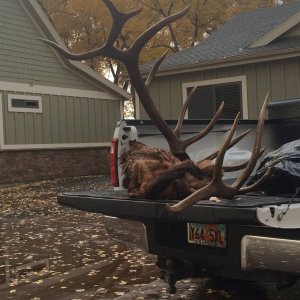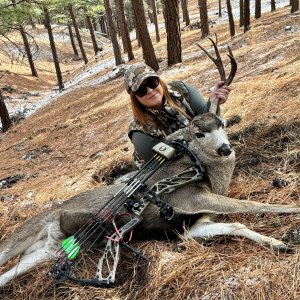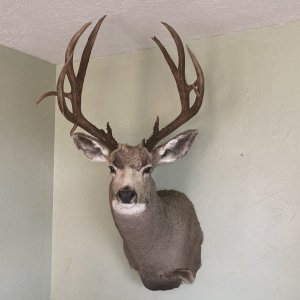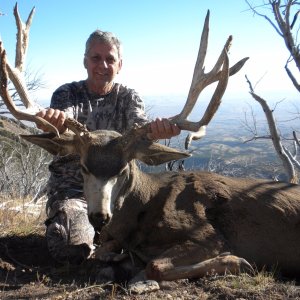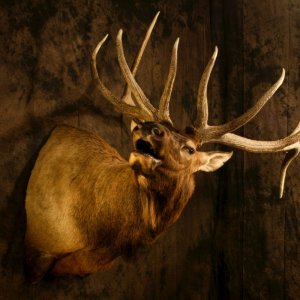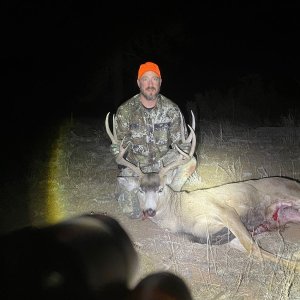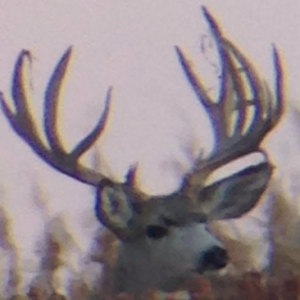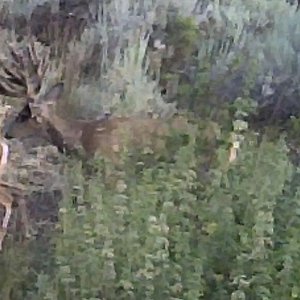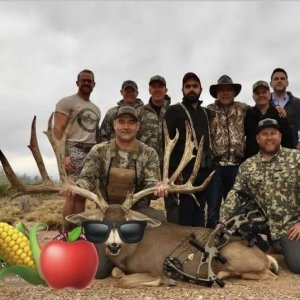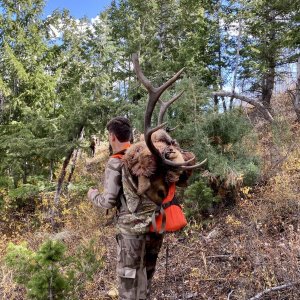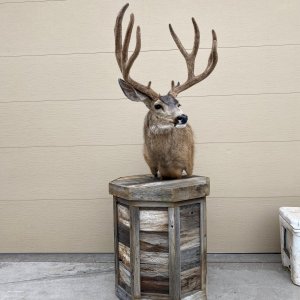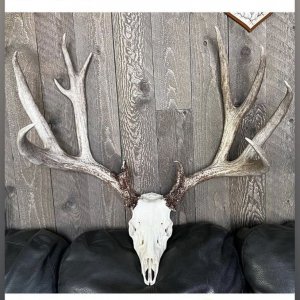W
Wyomingben
Guest
10/16/2004
Elk escapees spark new wildlife worries Ranches: The discovery of two bulls from a domestic facility raises concerns of disease and genetic impurity
By Brett Prettyman, The Salt Lake Tribune
Two Utah hunters were surprised earlier this month when bull elk they killed on public land north of Price had ear tags indicating they were from a hunting ranch in Montrose, Colo.
The tagged animals were not on the lam from the Colorado facility, but from the approximately 2,500-acre Royal Rut Hunting Preserve in Indian Canyon, where domestic elk are stalked by clients paying $12,000 and beyond to kill a trophy bull.
Had the two hunters shot their young bulls on the other side of the fence, it probably would have cost them $2,900 rather than the $60 they paid for a Utah elk permit.
The two bulls killed on opening weekend of the elk hunt, which the hunters were legally entitled to keep, were not the first to escape from one of the state's 42 elk farms or six hunting parks. But it was the first time public hunters killed agricultural animals on state land. The circumstances raised immediate, but not unexpected, concern.
"We made our opposition to elk ranching and domestic elk hunting well known when it was at the Legislature. It brings me no satisfaction to say 'I told you so,' '' said Bill Christensen, Western Region field director for the Rocky Mountain Elk Foundation (RMEF) and a resident of Salt Lake County.
Christensen, representatives of other wildlife groups and wildlife biologists warned legislators in 1997 and again in '99 that it would be impossible to keep domestic and wild elk apart and that maladies like chronic wasting disease, brucellosis and tuberculosis could be introduced to the state's herds.
"There are also huge ramifications about genetic purity," Christensen said. "I do not want to see one of the greatest animals of the West changed because of domestic elk." Christensen said domestic elk in North America have been found to carry red-deer genes, which could change the genetic purity of the Rocky Mountain elk and "change the heritage of the West."
Terry Menlove, chief of livestock inspection for the Utah Department of Agriculture, said there is no need to worry because the two bulls already killed and the other three or four which escaped over a snow bridge this past winter were disease free and genetically pure.
"We are obviously concerned with preventing the movement of wildlife in and the movement of domestic elk out, but more so that [the elk owner] can't afford to let those elk get out," Menlove said.
"As far as health or genetic concerns I see none. Before they are even allowed to be put in a place like that they have to go through a battery of tests to make sure they carry no diseases and to make sure they are pure Rocky Mountain elk."
In 1997, Division of Wildlife Resources (DWR) officials asked elk farming bill supporters to give them a year to study the practice, but the law passed despite testimony from Colorado officials that two wild herds of elk had been genetically altered by animals escaping from wildlife farms.
Wildlife officials say one of the bulls was shot within a mile of the Royal Rut Preserve fence line and the other about eight miles away. Both animals were 2-year-old bulls capable of reproduction.
"We have always been concerned that we would not be able to keep wild and domestic elk separate," said Miles Moretti, acting director of the DWR. "The deeper we get into [elk ranching and hunting parks] the more problems we have. It is very difficult to keep big animals behind high fences, especially in the mountains."
Moretti said there have been several other cases of domestic elk escaping from the mandated 8-foot high fenced enclosures, but the larger issue has been wild bulls breaking into the pens.
"It usually happens during the rut. Big bulls will get their antlers tied up in the fence and just rip it out to get to the cows," Moretti said, referring to the fall elk breeding season.
Menlove said there were about 2,500 domestic elk in Utah before the fall hunt commenced and that there have been only half a dozen instances where elk escaped their enclosures since elk ranching was legalized in 1997.
"In all cases we have been able to eliminate the problem," he said. "The owner decided to put the elk down, tranquilize it or was able to chum it back inside."
Menlove said owners of the Royal Rut Hunting Preserve were not fined for the escape of the elk and that they plan to raise the height of the fence at the 100-yard stretch where the drifting snow allowed the animals to flee.
Elk farming and harvesting timeline
l March 1997: Rep. Bradley T. Johnson, R-Aurora, sponsors the elk farming bill to give struggling ranchers another option. House Bill 90 passes despite opposition from the Utah Wildlife Board, Utah Division of Wildlife Resources, Utah Department of Natural Resources, Rocky Mountain Elk Foundation and the Humane Society of Utah.
March 1999: Sen. Leonard Blackham-R, Moroni, sponsors Senate Bill 45 to "delete the prohibition against hunting domesticated elk" in House Bill 90. Several senators, state wildlife officials, wildlife groups and hunters voice concerns about the ethics of "canned hunts," but the bill passes. Then-Gov. Mike Leavitt allows it to become law without his signature.
Oct. 2004: Hunters on public land kill two bull elk with ear tags from a game farm in Montrose, Colo. The animals are tracked to the Royal Rut Hunting Preserve in Indian Canyon northeast of Price. Wildlife and hunting groups voice concern that disease could spread from the domestic animals to wild herds and that the state's elk herd could be genetically tainted. But Utah Department of Agriculture officials say there is no cause for concern.
Elk escapees spark new wildlife worries Ranches: The discovery of two bulls from a domestic facility raises concerns of disease and genetic impurity
By Brett Prettyman, The Salt Lake Tribune
Two Utah hunters were surprised earlier this month when bull elk they killed on public land north of Price had ear tags indicating they were from a hunting ranch in Montrose, Colo.
The tagged animals were not on the lam from the Colorado facility, but from the approximately 2,500-acre Royal Rut Hunting Preserve in Indian Canyon, where domestic elk are stalked by clients paying $12,000 and beyond to kill a trophy bull.
Had the two hunters shot their young bulls on the other side of the fence, it probably would have cost them $2,900 rather than the $60 they paid for a Utah elk permit.
The two bulls killed on opening weekend of the elk hunt, which the hunters were legally entitled to keep, were not the first to escape from one of the state's 42 elk farms or six hunting parks. But it was the first time public hunters killed agricultural animals on state land. The circumstances raised immediate, but not unexpected, concern.
"We made our opposition to elk ranching and domestic elk hunting well known when it was at the Legislature. It brings me no satisfaction to say 'I told you so,' '' said Bill Christensen, Western Region field director for the Rocky Mountain Elk Foundation (RMEF) and a resident of Salt Lake County.
Christensen, representatives of other wildlife groups and wildlife biologists warned legislators in 1997 and again in '99 that it would be impossible to keep domestic and wild elk apart and that maladies like chronic wasting disease, brucellosis and tuberculosis could be introduced to the state's herds.
"There are also huge ramifications about genetic purity," Christensen said. "I do not want to see one of the greatest animals of the West changed because of domestic elk." Christensen said domestic elk in North America have been found to carry red-deer genes, which could change the genetic purity of the Rocky Mountain elk and "change the heritage of the West."
Terry Menlove, chief of livestock inspection for the Utah Department of Agriculture, said there is no need to worry because the two bulls already killed and the other three or four which escaped over a snow bridge this past winter were disease free and genetically pure.
"We are obviously concerned with preventing the movement of wildlife in and the movement of domestic elk out, but more so that [the elk owner] can't afford to let those elk get out," Menlove said.
"As far as health or genetic concerns I see none. Before they are even allowed to be put in a place like that they have to go through a battery of tests to make sure they carry no diseases and to make sure they are pure Rocky Mountain elk."
In 1997, Division of Wildlife Resources (DWR) officials asked elk farming bill supporters to give them a year to study the practice, but the law passed despite testimony from Colorado officials that two wild herds of elk had been genetically altered by animals escaping from wildlife farms.
Wildlife officials say one of the bulls was shot within a mile of the Royal Rut Preserve fence line and the other about eight miles away. Both animals were 2-year-old bulls capable of reproduction.
"We have always been concerned that we would not be able to keep wild and domestic elk separate," said Miles Moretti, acting director of the DWR. "The deeper we get into [elk ranching and hunting parks] the more problems we have. It is very difficult to keep big animals behind high fences, especially in the mountains."
Moretti said there have been several other cases of domestic elk escaping from the mandated 8-foot high fenced enclosures, but the larger issue has been wild bulls breaking into the pens.
"It usually happens during the rut. Big bulls will get their antlers tied up in the fence and just rip it out to get to the cows," Moretti said, referring to the fall elk breeding season.
Menlove said there were about 2,500 domestic elk in Utah before the fall hunt commenced and that there have been only half a dozen instances where elk escaped their enclosures since elk ranching was legalized in 1997.
"In all cases we have been able to eliminate the problem," he said. "The owner decided to put the elk down, tranquilize it or was able to chum it back inside."
Menlove said owners of the Royal Rut Hunting Preserve were not fined for the escape of the elk and that they plan to raise the height of the fence at the 100-yard stretch where the drifting snow allowed the animals to flee.
Elk farming and harvesting timeline
l March 1997: Rep. Bradley T. Johnson, R-Aurora, sponsors the elk farming bill to give struggling ranchers another option. House Bill 90 passes despite opposition from the Utah Wildlife Board, Utah Division of Wildlife Resources, Utah Department of Natural Resources, Rocky Mountain Elk Foundation and the Humane Society of Utah.
March 1999: Sen. Leonard Blackham-R, Moroni, sponsors Senate Bill 45 to "delete the prohibition against hunting domesticated elk" in House Bill 90. Several senators, state wildlife officials, wildlife groups and hunters voice concerns about the ethics of "canned hunts," but the bill passes. Then-Gov. Mike Leavitt allows it to become law without his signature.
Oct. 2004: Hunters on public land kill two bull elk with ear tags from a game farm in Montrose, Colo. The animals are tracked to the Royal Rut Hunting Preserve in Indian Canyon northeast of Price. Wildlife and hunting groups voice concern that disease could spread from the domestic animals to wild herds and that the state's elk herd could be genetically tainted. But Utah Department of Agriculture officials say there is no cause for concern.

